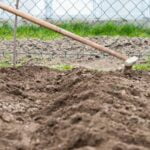Are you ready to dive into the world of creative vegetable gardening? Whether you’re a seasoned gardener looking for new inspiration or a beginner wanting to explore innovative ways to grow your own produce, this article is for you. Creative vegetable gardening goes beyond traditional methods and opens up a world of possibilities for growing, using, and enjoying fresh vegetables in exciting and unconventional ways.
With the rising interest in sustainable living and self-sufficiency, creative vegetable gardening has become a popular and rewarding way to connect with nature and food production. By incorporating inventive strategies and thinking outside the box, gardeners can not only enjoy the health benefits of eating homegrown produce but also contribute to environmental sustainability and save money on grocery bills.
In this comprehensive guide, we’ll explore the numerous benefits of creative vegetable gardening, unique and unusual varieties to grow, designing your garden for maximum productivity, DIY projects to enhance your garden space, creative ways to use your harvest, overcoming challenges like pests and limited space, as well as real success stories from passionate vegetable gardeners around the world. Get ready to step into a world where creativity meets productivity in the art of growing vegetables.
Benefits of Creative Vegetable Gardening
When it comes to creative vegetable gardening, the benefits are plentiful and impactful. One of the most significant advantages is the positive impact on one’s health. By growing your own vegetables, you have control over what goes into the soil and onto your plants, ensuring that you can enjoy fresh, organic produce free from pesticides and harmful chemicals. Additionally, tending to a garden provides physical exercise and stress relief, contributing to overall well-being.
In addition to personal health benefits, creative vegetable gardening also promotes sustainability. By growing your own food, you reduce the carbon footprint associated with transporting produce long distances. Moreover, utilizing organic growing methods and composting kitchen waste contributes to environmental conservation. These practices not only benefit the Earth but also set an example for others in the community.
Furthermore, engaging in creative vegetable gardening can lead to cost-effectiveness. While there is an initial investment in materials and seeds, maintaining a productive garden can significantly lower grocery expenses over time. Additionally, surplus produce can be preserved through various methods such as canning or freezing, allowing you to enjoy your homegrown vegetables throughout the year without having to purchase them from external sources. Overall, creative vegetable gardening offers numerous benefits that positively impact both individuals and the environment.
Unique and Unusual Vegetable Varieties to Grow
When it comes to creative vegetable gardening, thinking outside the box can lead to some truly unique and unusual vegetable varieties that you might not find in your average grocery store. These off-the-beaten-path vegetables can add interest and diversity to your garden, as well as to your dinner plate. By exploring and growing different and uncommon veggies, you can expand your culinary horizons and discover new flavors and textures.
Exploring Heirloom Varieties
One way to think outside the box when it comes to vegetable gardening is by exploring heirloom varieties. These are traditional plant varieties that have been passed down through generations, often with unique colors, shapes, and tastes. From purple tomatoes to striped beets, heirloom vegetables can add a pop of color and flavor to your garden.
Unusual Greens
Instead of sticking with the typical lettuce and spinach, consider growing some more unusual greens in your garden. Vegetables like mizuna, tatsoi, or even edible flowers like nasturtiums can add a surprising twist to your salads and stir-fries. Not only do they provide interesting flavors, but they also offer nutritional benefits that may be different from more common greens.
Rare Root Vegetables
In addition to the standard carrots and potatoes, there are many other root vegetables that are lesser-known but equally delicious. For example, salsify has a delicate flavor reminiscent of oysters, while sunchoke (also known as Jerusalem artichoke) offers a nutty taste similar to water chestnuts. Growing these rare root vegetables can introduce you to new culinary experiences while adding diversity to your harvest.
By embracing these unique and unusual vegetable varieties in your garden, you can truly unleash your creativity in both the cultivation of the plants themselves as well as their use in cooking and preserving. Whether it’s heirloom tomatoes with vibrant colors or rare root vegetables with distinct flavors, expanding beyond the usual suspects will allow you to explore new tastes and experiences within the realm of vegetable gardening.
Designing Your Vegetable Garden
Designing a vegetable garden is an opportunity to showcase creativity and innovation in gardening. Utilizing vertical space, container gardening, and companion planting are all ways to maximize the potential of your garden and produce a bountiful harvest.
Vertical gardening is a great way to make the most of limited space while adding visual interest to your garden. By growing plants up trellises, fences, or walls, you can free up ground space and create a lush green backdrop for your garden.
Some vegetables that thrive in vertical gardens include pole beans, cucumbers, tomatoes, and peas. Not only does vertical gardening save space, but it also makes harvesting easier and can help with pest control by keeping plants off the ground.
Container gardening is another innovative approach to vegetable gardening. It allows you to grow vegetables in pots on patios, balconies, or even indoors. This method is perfect for urban gardeners or those with small outdoor spaces. Almost any vegetable can be grown in a container as long as there’s enough sunlight and water. Container gardening also provides the flexibility to move plants around for better growing conditions or aesthetic purposes.
Companion planting involves growing different types of plants together so that they can benefit each other in various ways. For example, some plants repel pests that are harmful to others when planted nearby. Others may enhance soil fertility or provide shade for more delicate crops. By strategically planning which vegetables to grow together in your garden, you can promote healthier plants and increase overall yield.
| Benefit | Example |
|---|---|
| Vertical Gardening | Pole beans, cucumbers, tomatoes |
| Container Gardening | Lettuce, radishes, peppers |
| Companion Planting | Tomatoes with basil; marigolds with vegetables |
DIY Projects for Creative Vegetable Gardening
When it comes to creative vegetable gardening, DIY projects play a crucial role in adding a unique and personal touch to your garden space. From homemade trellises to raised beds and garden art, there are numerous opportunities to get creative and crafty while tending to your vegetable patch.
Homemade Trellises
Creating your own trellises for climbing vegetables not only adds a visually appealing aspect to your garden but also maximizes space. Consider using materials such as bamboo, wood, or even repurposed items like old ladders or bike wheels. By building your own trellises, you can customize the size and design to fit the specific needs of your garden and plants.
Raised Beds
For those with limited space or poor soil conditions, raised beds are a great way to cultivate a thriving vegetable garden. Constructing raised beds can be as simple as stacking untreated lumber or repurposing materials like cinder blocks and old tires. Not only do raised beds provide better drainage and soil quality, but they also make gardening more accessible for individuals with physical limitations.
Garden Art
Incorporating artistic elements into your vegetable garden not only adds visual interest but also fosters a sense of creativity and individuality. Consider adding hand-painted signs, mosaic stepping stones, or repurposed sculptures made from upcycled materials. Garden art not only enhances the beauty of the space but also creates a welcoming atmosphere for both plants and people.
By incorporating these DIY projects into your creative vegetable gardening endeavors, you can infuse personality and innovation into your growing space while reaping the benefits of sustainability and cost-effectiveness.
Creative Ways to Use Vegetables
Creative Recipes With Vegetables
One of the most enjoyable aspects of creative vegetable gardening is using the produce in innovative and delicious recipes. Whether it’s making a fresh salsa from homegrown tomatoes and peppers, or creating a colorful vegetable stir-fry with a variety of garden vegetables, there are endless possibilities for incorporating homegrown produce into your cooking. Creative vegetable gardening allows you to experiment with unique flavor combinations and explore different culinary traditions.
Preserving Your Harvest
Preserving the bounty from your vegetable garden is an essential part of creative vegetable gardening. From canning homemade pickles to freezing surplus vegetables for use in the off-season, there are numerous methods for preserving your harvest. By learning how to pickle, ferment, and dry vegetables, you can extend the enjoyment of your garden’s produce throughout the year.
Making Homemade Beauty Products
In addition to culinary uses, creative vegetable gardening opens up opportunities for making homemade beauty products. Many common garden vegetables such as cucumbers, carrots, and herbs can be transformed into natural skincare treatments like face masks, scrubs, and lotions.
Utilizing homegrown ingredients not only ensures the purity of these beauty products but also adds an element of creativity and self-sufficiency to your daily skincare routine. By exploring the art of creative vegetable gardening in this way, you can embrace a holistic approach to utilizing your garden’s abundance.
Overcoming Challenges
Many beginner gardeners may find themselves discouraged by the challenges of dealing with pests, unpredictable weather, and limited space when it comes to vegetable gardening. However, with a little creativity and problem-solving, these obstacles can be overcome to create a thriving and bountiful garden.
One way to tackle pests in a creative vegetable garden is by implementing natural pest control methods. This can include attracting beneficial insects such as ladybugs and lacewings, using companion planting to deter pests, and incorporating natural insect repellents like garlic spray. Additionally, creating physical barriers such as row covers or netting can help protect your vegetables from unwanted critters.
Weather can also pose a challenge for vegetable gardeners, especially in areas with extreme temperatures or unpredictable climate patterns. Creative solutions to weather-related issues can include using shade cloth or cold frames to protect plants from excessive heat or providing frost protection during cold snaps. Additionally, utilizing microclimates within your garden space can help create optimal growing conditions for different types of vegetables.
Limited space is another common challenge for many aspiring vegetable gardeners, especially those living in urban environments or small homes. However, with careful planning and innovative techniques such as vertical gardening, square foot gardening, and container gardening, even the smallest spaces can be transformed into productive and beautiful vegetable gardens. Utilizing hanging baskets, wall-mounted planters, and trellises can maximize space while still allowing for a diverse range of vegetables to be grown.
Embracing the art of creative vegetable gardening means finding inventive ways to overcome challenges and cultivate a successful and rewarding garden despite any obstacles that may arise. By thinking outside the box and exploring alternative methods of pest control, weather protection, and space utilization, gardeners can turn their vegetable plots into thriving oases of fresh produce.
Success Stories
When it comes to creative vegetable gardening, success stories from around the world can provide inspiration and innovative ideas for gardeners. In Japan, for example, farmers have been practicing “tsukemono” or pickling vegetables for centuries as a way to preserve and creatively use an abundance of harvest. This traditional method not only extends the shelf life of fresh vegetables but also adds flavor and nutrition.
In urban areas like New York City, rooftop gardens and community gardens are becoming more popular, showcasing how even limited space can be utilized in creative ways to grow vegetables. These success stories demonstrate that with a little creativity and determination, anyone can enjoy the benefits of growing their own produce.
Another inspiring example is the concept of edible landscaping, which has gained popularity in Europe. Edible landscaping is a practice that incorporates edible plants into decorative landscapes, creating beautiful and functional gardens. This approach not only offers fresh and healthy produce but also enhances the visual appeal of outdoor spaces. By combining aesthetics with practicality, edible landscaping showcases how vegetable gardening can be integrated into everyday life seamlessly.
In addition to these examples from other parts of the world, there are also numerous success stories closer to home that highlight creative vegetable gardening techniques. From suburban backyard gardens with ingenious raised bed designs to urban balconies transformed into vibrant vegetable oases, these success stories serve as a reminder that creativity knows no boundaries when it comes to cultivating a thriving vegetable garden.
| Country/City | Innovative Technique |
|---|---|
| Japan | “Tsukemono” pickling for preservation and creative use |
| New York City | Rooftop gardens and community gardens in urban areas |
| Europe | Edible landscaping integrating functional plants into decorative landscapes |
Conclusion
In conclusion, embracing the art of creative vegetable gardening opens up a world of possibilities that go beyond simply growing food. The benefits of engaging in this unique and innovative approach to gardening are plentiful. By thinking outside the box and exploring unusual vegetable varieties, gardeners can not only improve their health by consuming fresh, homegrown produce, but also contribute to sustainability efforts and save on grocery expenses.
Furthermore, designing a vegetable garden with creativity in mind allows for the utilization of vertical space, container gardening, and companion planting techniques, making it possible to cultivate an abundant harvest even in limited spaces. DIY projects such as homemade trellises, raised beds, and garden art offer an opportunity for gardeners to express their creativity while enhancing the functionality and aesthetic appeal of their gardens.
Moreover, finding creative ways to use harvested vegetables-such as experimenting with new recipes, preserving excess produce for later use, or creating homemade beauty products-adds another layer of enjoyment to the gardening experience. By overcoming challenges such as pests, weather conditions, and limited space through creative solutions and resourcefulness, vegetable gardeners can achieve success and become inspiring examples for others seeking to venture into the world of creative vegetable gardening.
As we continue to witness the multitude of benefits associated with this form of gardening practice-from promoting healthier living to encouraging greater self-sufficiency-it’s clear that reimagining traditional methods is crucial for cultivating a thriving and sustainable future.
Frequently Asked Questions
What Is the Best Layout for a Vegetable Garden?
The best layout for a vegetable garden typically involves organizing plants in rows or raised beds to maximize space and sunlight. Consider factors like companion planting and plant rotation to optimize growth and yield.
How Can I Make My Vegetable Garden Attractive?
Making your vegetable garden attractive can be achieved through incorporating decorative elements like trellises, colorful planters, and paths. Incorporating flowers, herbs, and unique vegetables into the garden can also add visual interest.
What Are the 10 Easiest Vegetables to Grow?
Some of the easiest vegetables to grow include tomatoes, lettuce, cucumbers, zucchini, radishes, green beans, spinach, peppers, carrots, and peas. These vegetables are relatively low-maintenance and adaptable to various growing conditions.

If you’re looking to get into vegetable gardening, or are just looking for some tips on how to make your current garden better, then you’ve come to the right place! My name is Ethel and I have been gardening for years. In this blog, I’m going to share with you some of my best tips on how to create a successful vegetable garden.





